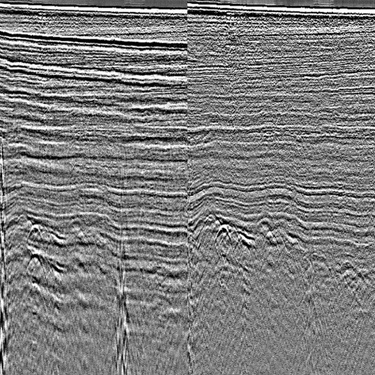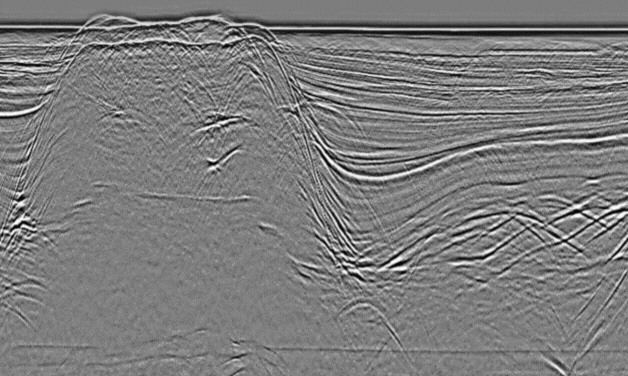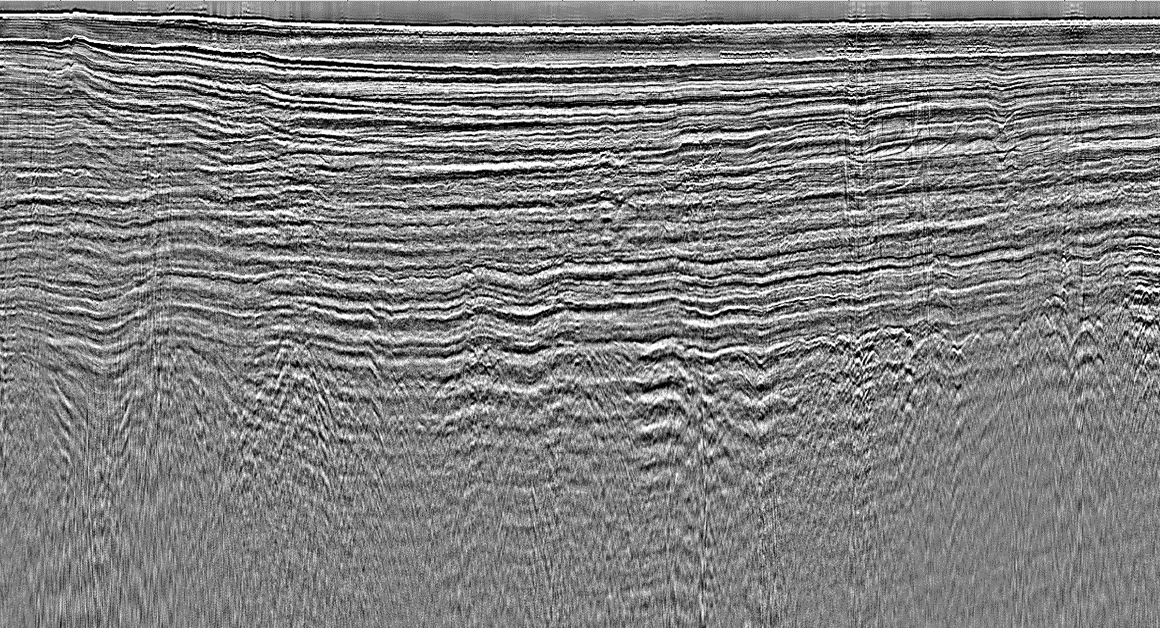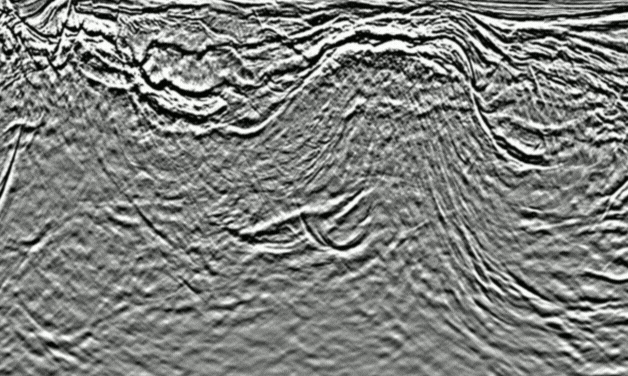Multiple Attenuation
We have a suite of tools for multiple prediction and attenuation with prediction tools for surface and interbed multiples in all environments, from shallow to deep.


3D SRME
3D SRME is a data-driven, multiple attenuation technique that can accurately predict surface multiples in complex areas. It can utilize full azimuth data in its prediction and can attack multiples effectively in marine streamer, OBN, OBC and land surveys. Combined with a full suite of multi-dimensional least squares and curvelet adaptive subtraction routines, SRME can differentiate primary and multiple to successfully reveal the structure beneath.
3D SWME
Shallow Water Multiple Elimination is an extension of SRME that uses a modeled water bottom (the Green’s function) to predict high-fidelity water layer multiples in shallow marine data. Combined with SRME, our multiple attenuation suite can create high-frequency, accurate multiple models in shallow water environments with complex geometries using narrow or full azimuth data.
SWME takes advantage of our full suite of multi-dimensional least squares and curvelet adaptive subtraction routines, each of which is capable of simultaneous matching of several multiple models. Simultaneous matching chooses the best of SRME and SWME models to create the most accurate differentiation between primary and multiple.


IME
Our suite of interbed prediction tools includes Jakubowicz, Marchenko-style and ISS interbed prediction methods. Predictions can be based on a specific multiple generator, all multiple generators within a region, or all multiple generators. Our interbed tools can work with narrow or full azimuth input to generate accurate models in complex geology.
IME works with our suite of multi-dimensional least squares and curvelet adaptive subtraction routines in either a sequential “layer-stripping” method or a simultaneous match. These tools allow us to tailor our approach for each dataset to get the best differentiation between primary and multiple.

